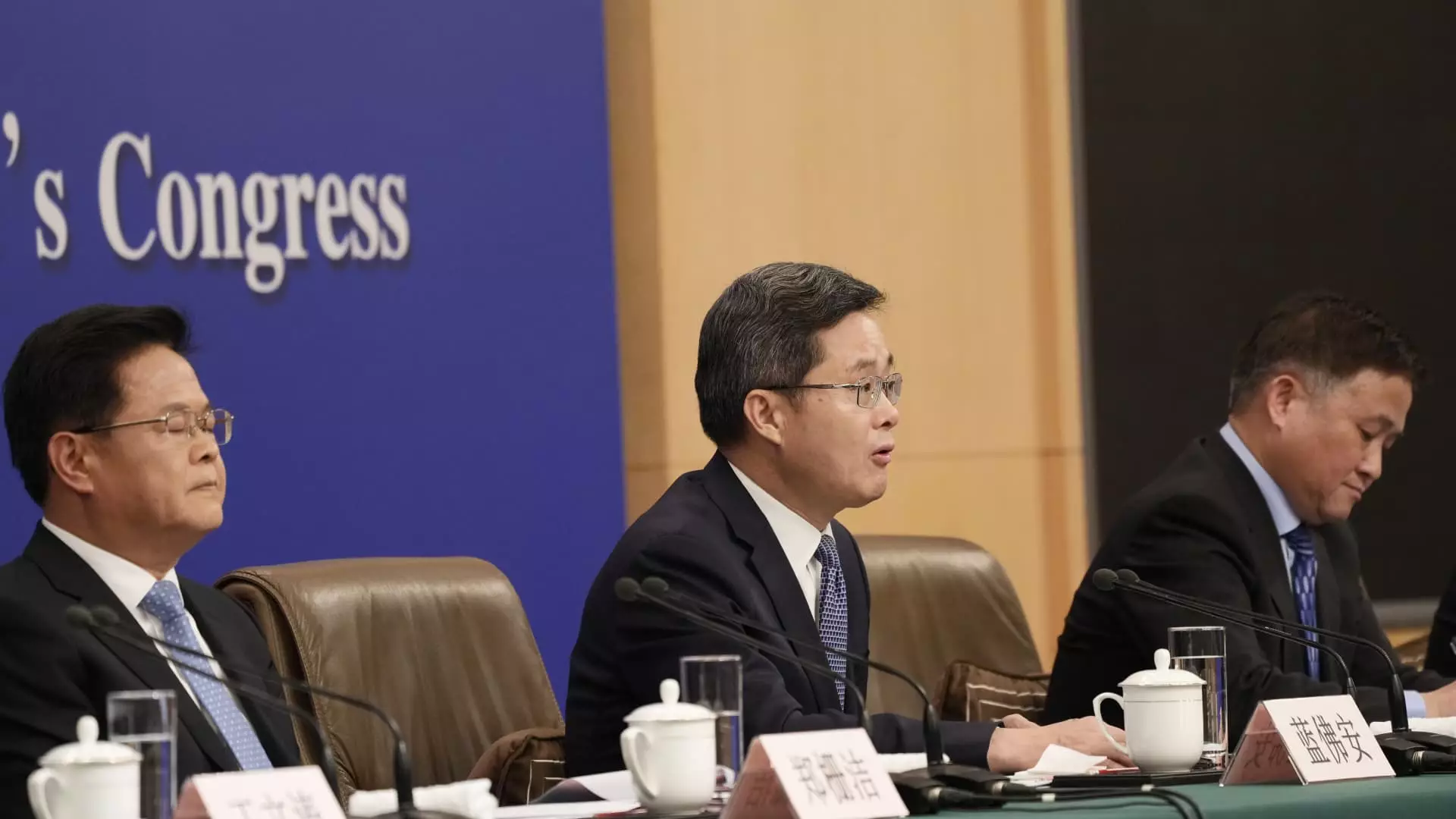The upcoming press conference by China’s Minister of Finance, Lan Fo’an, on Saturday has sparked considerable interest among economists and market analysts alike. With China’s economy facing sluggish growth and challenges such as a persistent real estate slump, there is growing pressure for the government to unveil concrete fiscal measures to support the country’s economic recovery. Despite previous high-level discussions led by President Xi Jinping emphasizing the need for robust policy support, specific actionable initiatives remain elusive.
The expectation is clear: China requires additional fiscal support to stimulate underwhelming growth dynamics. Economists suggest stimulus measures that could amount to between 2 trillion yuan (approximately $283 billion) and a staggering 10 trillion yuan. This variance highlights the uncertainty surrounding not just the amount but the type and focus of any proposed stimulus, underscoring a critical gap in government communication.
One essential consideration highlighted by Ting Lu, Chief China Economist at Nomura, is the necessity for parliamentary approval for any fiscal stimulus proposed. The National People’s Congress (NPC) is scheduled to convene later this month, which means that any immediate fiscal strategies could face delays depending on the legislative process. The implications of this parliamentary involvement extend beyond mere approval; they touch on the strategic allocation of funds and the effectiveness of the stimulus itself. It raises the question of whether the government will prioritize immediate economic relief or long-term structural investments.
Moreover, analysts point out that the effectiveness of fiscal measures hinges on an appropriate balance between bolstering local government finances, which are currently stretched thin, and stimulating consumer spending, a critical component for sustainable economic recovery. The tension between these two needs will likely shape the discourse surrounding the forthcoming measures.
Current Economic Indicators: A Mixed Bag
As China grapples with these economic challenges, the state of retail sales and GDP growth adds further complexity. Recent data indicates that retail sales have seen only modest improvement, and the beleaguered real estate market continues to struggle, with scant signs of recovery. China’s GDP, which grew by 5% in the first half of the year, raises alarms about the viability of meeting the full-year growth target of around 5%. The upcoming release of third-quarter GDP data on October 18 is being closely watched, as it will provide crucial insight into the trajectory of the broader economy.
The markets have reacted with notable volatility, particularly following a weeklong holiday. Initially buoyed by expectations of government stimulus, the mainland Chinese stock market faced a downturn, reverting to the levels observed in late September. This fluctuation underscores the fragility of market confidence and the dependence on government policy, reflecting deeper concerns about economic stability.
In recent initiatives aimed at alleviating economic pressure, the People’s Bank of China (PBOC) has initiated several measures, including interest rate cuts and extended support for the real estate sector. The introduction of a $71 billion program enabling institutional investors to borrow for stock investments was part of an effort to revitalize the markets. Additionally, the National Development and Reform Commission’s (NDRC) commitment to expedite the utilization of previously allocated funds is a step in the right direction, though it did not materialize into new stimulus announcements.
This juxtaposition of policy responses against ongoing economic tribulations paints a complex picture. Government actions may have a direct impact on market sentiment, yet without sustained growth in consumer confidence and spending, any relief may be short-lived.
As China prepares for the Minister of Finance’s press conference, the prevailing sentiment among economists is one of cautious optimism tempered by a stark reality: the road to recovery is fraught with uncertainties. The interplay between fiscal stimulus, legislative approval, and market reactions encapsulates the broader challenges facing China’s economy. Moving forward, the focus must remain on not only the size of any stimulus injected into the economy but also on its strategic implementation to foster long-term stability and growth. With the market’s eyes keenly fixed on potential announcements, the coming weeks are poised to be pivotal in shaping China’s economic future.

